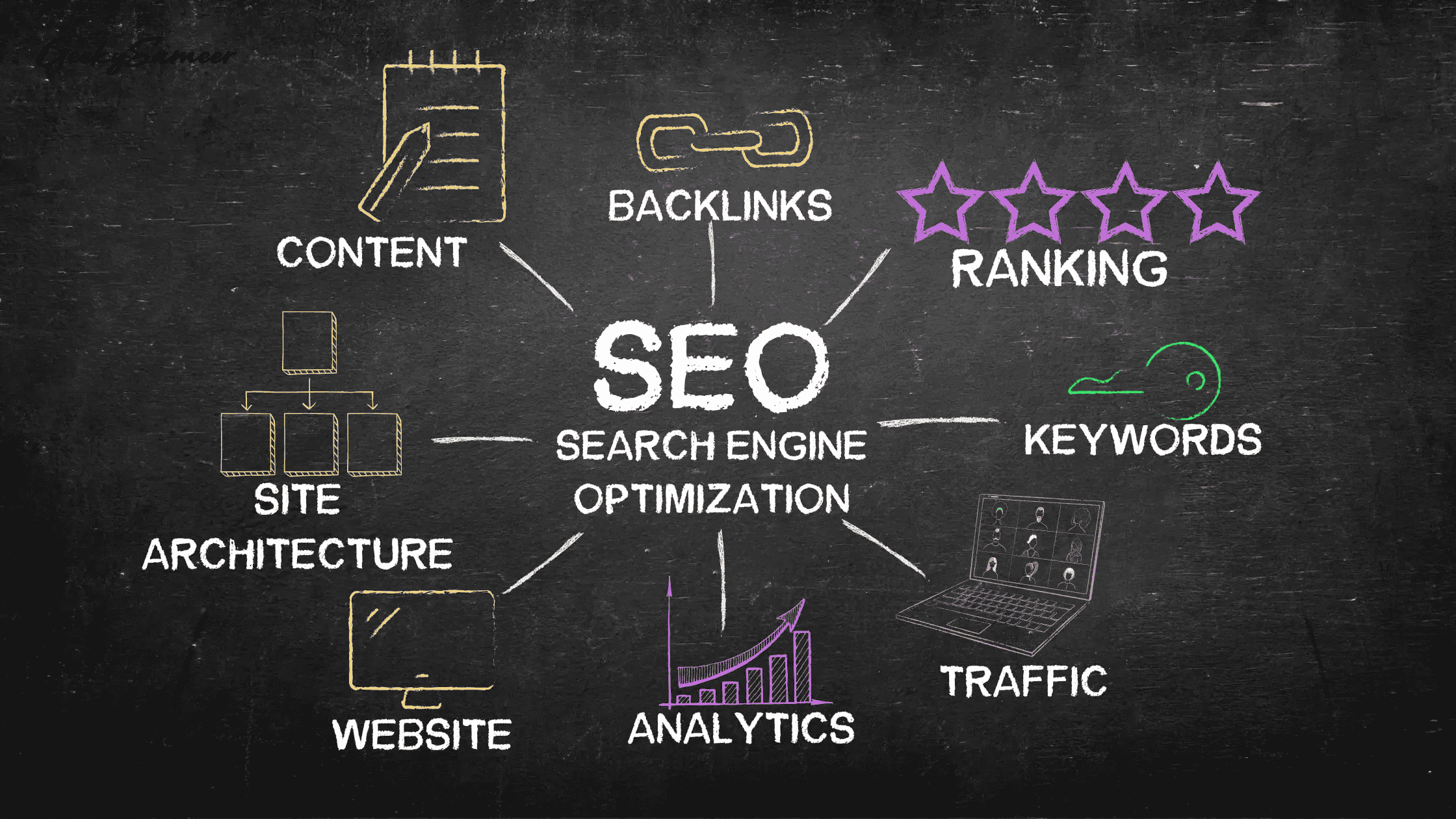Website Lead Generation Analytics: Measuring What Matters Most for Success

Introduction
Ever wondered how successful businesses seem to always be a step ahead? It's all about the numbers. Website lead generation analytics play a pivotal role in understanding and enhancing your lead generation efforts. By tracking how potential leads interact with your site, you're equipped to make informed decisions that can significantly boost your conversion rates.
But what exactly should you be measuring? Consider this: a high volume of leads doesn't always equate to quality. That's why it's crucial to not just count leads but to analyze their behaviours and engagement levels. Are they just browsing, or are they ready to take action? Analytics tools help you dive deep into these questions, ensuring you're not just attracting leads but the right kind of leads.
Measuring lead generation success is crucial for businesses to understand the effectiveness of their strategies and optimize their marketing efforts. As you move forward, ask yourself, are you tracking the right metrics?
Conversion rates, lead volume, cost per lead, and lead quality are just the tip of the iceberg. Let's break it down in a simple table:
| Metric | Why It Matters |
| Conversion Rate | Gauges the success of lead generation strategies |
| Lead Volume | Indicates market interest and campaign reach |
| Cost Per Lead | Reflects the efficiency of marketing investments |
| Lead Quality | Ensures targeting of high-potential prospects |
Understanding these metrics is just the beginning.
Are you ready to dive deeper into your lead generation objectives? Let's define your goals and KPIs to ensure your efforts are aligned with your business aspirations.

Define Your Goals and KPIs (Key Performance Indicators)
Before diving into the analytics, ask yourself: What are you aiming to achieve with your lead generation efforts?
Setting clear objectives is your road-map to success. Are you looking to increase lead volume, enhance lead quality, or reduce cost per lead? Perhaps your goal is to boost conversion rates. Each objective demands its own set of KPIs.
For instance:
a. Lead Volume: Total number of leads generated.
b. Lead Quality: Percentage of leads that become qualified prospects.
c. Cost Per Lead: Total spend divided by the number of leads.
d. Conversion Rate: Percentage of visitors who become leads.
Measuring lead generation success is crucial for businesses to understand the effectiveness of their strategies and optimize their marketing efforts. It's essential to align them with your overall marketing strategy. After all, a high volume of low-quality leads won't help if you aim to increase sales of a high-ticket item.
Now, let's move on to understanding where these leads are coming from. It's time to track lead sources and analyze their performance.
Track Lead Sources and Analyze Performance
Knowing where your leads come from is crucial. Are they finding you through search engines, social media, or paid ads? By tracking the cost per lead across different channels, you can allocate your budget more effectively. For instance, if paid search is yielding a lower cost per lead compared to social media, it might be wise to invest more in that area. Additionally, it's important to analyze their behaviors and engagement to further optimize your marketing strategies.
Are your sales-qualified leads (SQLs) coming from the channels you're investing in the most? This question is vital for understanding the return on investment (ROI) of your lead generation efforts.
A breakdown of lead sources can look something like this:
| Channel | Leads Generated | Cost per Lead |
| SEO | 150 | $30 |
| PPC | 100 | $50 |
| Social | 75 | $40 |
Engagement metrics also play a role. How long do leads stay on your site? What actions are they taking? These insights can help you refine your strategies and improve lead quality.Remember that not all leads are created equal. Some might be ready to buy, while others need more time. Tailoring your approach to different segments can increase conversion rates and the number of SQLs.
Measure Lead Quality and Engagement
Ever wondered how to gauge the actual value of your leads? It's all about assessing lead quality. High lead quality means you're attracting the right people—those who are genuinely interested in what you offer.
But how do you measure it?
Start by looking at your marketing-qualified leads (MQLs). These are leads that have shown a certain level of engagement or interest that qualifies them for further nurturing. Are your MQLs consistently converting to customers? If not, it's time to dive deeper into their relevance and intent.
Consider the following factors when evaluating lead quality:
1. Lead source: Where are your leads coming from?
2. Lead behaviour: What actions are they taking on your site?
3. Lead information: How complete and accurate is the data they provide?
By closely monitoring these aspects, you can begin to understand which leads are more likely to convert and why. This insight is crucial for optimizing your marketing efforts and ensuring a higher ROI. Now, ask yourself: are you nurturing your leads effectively? If you're unsure, it's time to optimize your website for conversions. This is where you can make a real impact on turning those leads into loyal customers.

Optimize Your Website for Conversions
Optimizing your website for conversions is crucial. The goal is to turn visitors into leads or customers, and a key metric here is the conversion rate. Simple tweaks can make a big difference. For instance, using clear and compelling CTAs can raise your conversion rate significantly. You should also keep an eye on your site quality and uptime. A reliable solution for website performance monitoring helps you detect performance dip-points before they impact visitor behaviour and conversions.
Here's a quick checklist to help you get started:
a. Use clear and compelling calls to action (CTAs).
b. Simplify forms and checkout processes.
c. Leverage pop-ups to capture visitors before they leave.
Bounce rate is another vital metric. It reflects the percentage of visitors who leave without engaging. A high bounce rate might indicate that your website isn't capturing visitors' interest effectively. Are you analyzing how visitors interact with your site? It's not just about the number of clicks; it's about what happens after that click.
As you move to the next section, think about how you can continuously monitor and refine these techniques for better results.
Continuously Monitor and Refine
The cycle of analytics is a continuous journey of improvement. Have you ever noticed a sudden spike or drop in your lead generation metrics? Regular tracking of your metrics is crucial to spotting these changes. By analyzing patterns and trends, you're equipped to make data-driven decisions that can significantly enhance your lead-generation efforts.
How often do you review your analytics? Whether it's weekly, monthly, or quarterly, each review is an opportunity to refine your strategy. Consider the following aspects when choosing analytics tools:
a. Ease of data collection and interpretation.
b. Comprehensive reporting features.
c. Real-time insights into customer behavior.
d. Compatibility with your marketing and sales platforms.
It's vital to use the insights from your analytics to guide your actions. Identify areas for improvement and take steps to optimize them for better customer retention and lead quality. Analytics isn't just about collecting data; it's about turning that data into actionable insights. With the right tools and a growth mindset, you can transform your lead generation strategy from aspirations into achievements.
Conclusion
In the digital age, mastering website lead generation analytics is not just a competitive edge—it's a necessity. By defining clear goals and KPIs, tracking lead sources, measuring lead quality and engagement, optimizing for conversions, and continuously refining your approach, you can ensure that your lead generation efforts are as effective as possible.
Remember, the key to success lies in understanding and acting on the data. Analytics provide the insights needed to make informed decisions that drive growth and profitability. So, keep a keen eye on those metrics that matter most to your business, nurture your leads with precision, and watch as your strategic efforts translate into tangible success.
Whether you're a seasoned marketer or just starting, the journey to lead generation mastery is ongoing. Embrace the analytics, and let the numbers guide your path to success.
Frequently Asked Questions
How can analytics tools improve website lead generation?
Analytics tools can track leads' behaviors and conversions, providing insights into how potential leads navigate a website. This data allows businesses to make informed decisions to optimize website elements for better lead generation, ensuring that marketing efforts are practical and efficient.
What are the key metrics to track for measuring lead generation success?
Key metrics include conversion rates, lead volume, cost per lead, and lead quality. Conversion rates indicate the success of lead generation strategies, lead volume, and cost per lead, offering insights on marketing investment efficiency and lead quality, which ensures the targeting of high-potential prospects for consistent sales and growth.
Why are managing and nurturing leads important after generating them?
Managing and nurturing leads is crucial because it helps maintain engagement with potential customers. Using targeted strategies and lead management software can streamline the process, allowing for effective scoring, grading, and routing of leads to the sales team, ultimately increasing the customer base and driving revenue.






